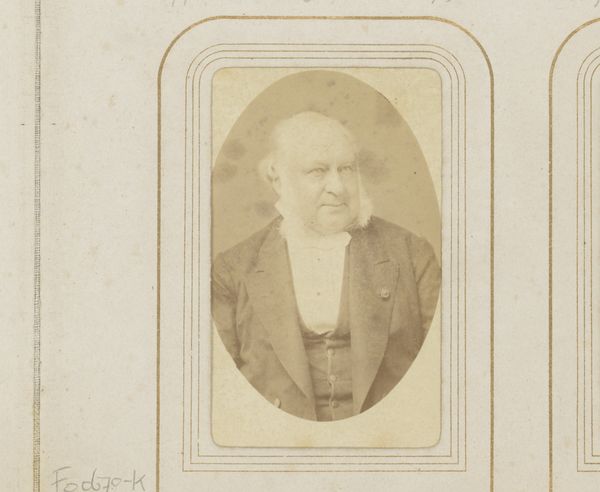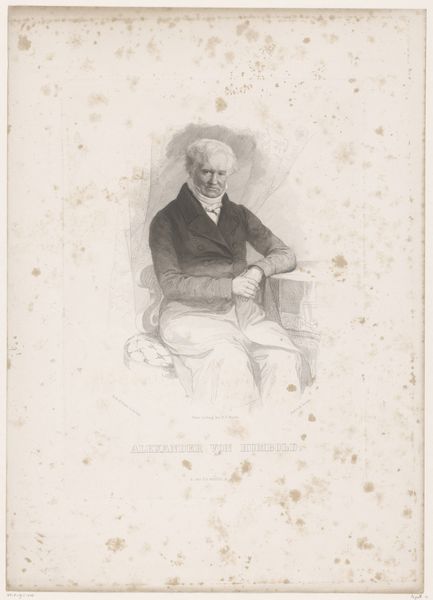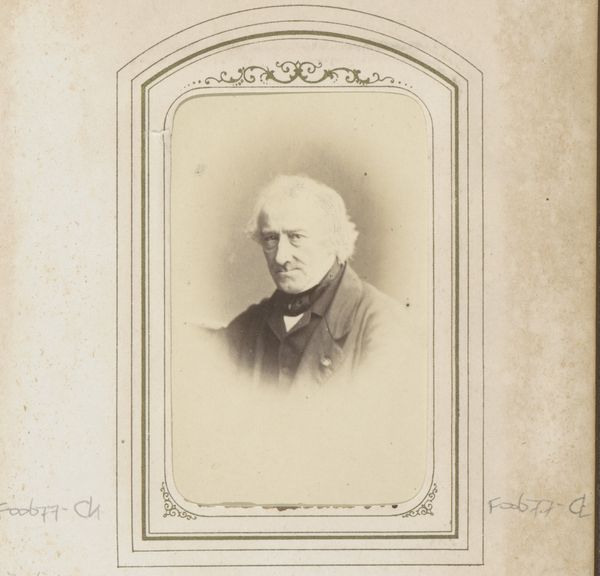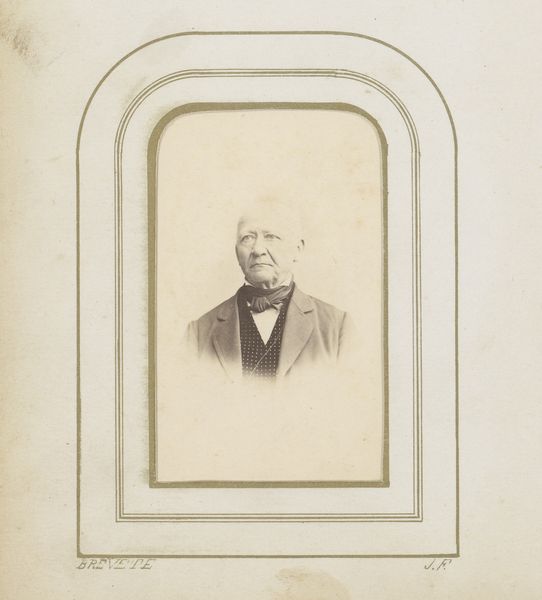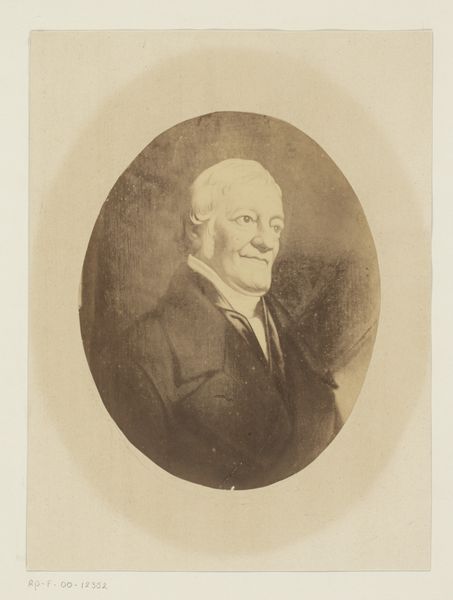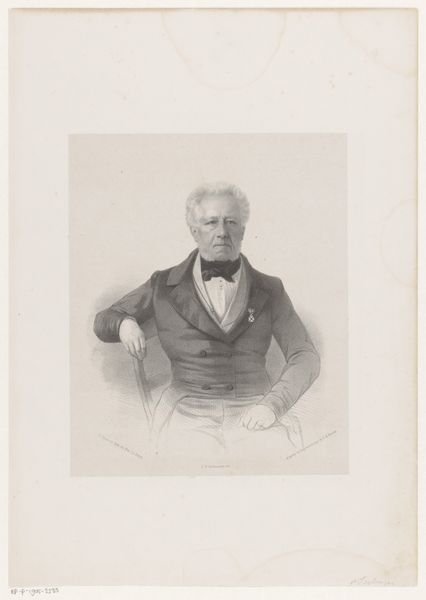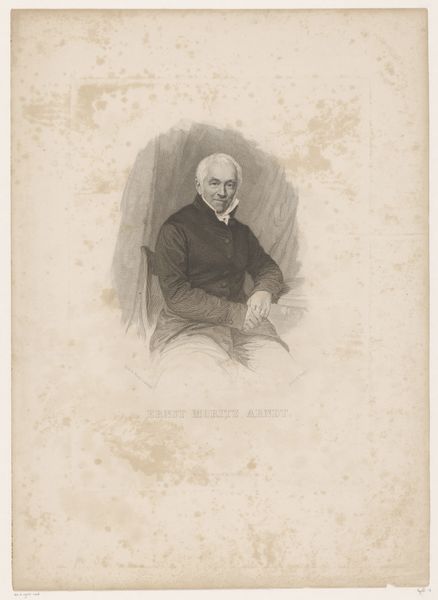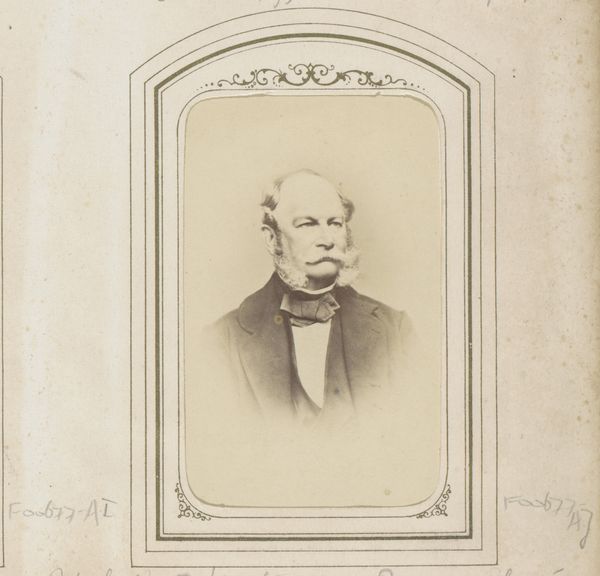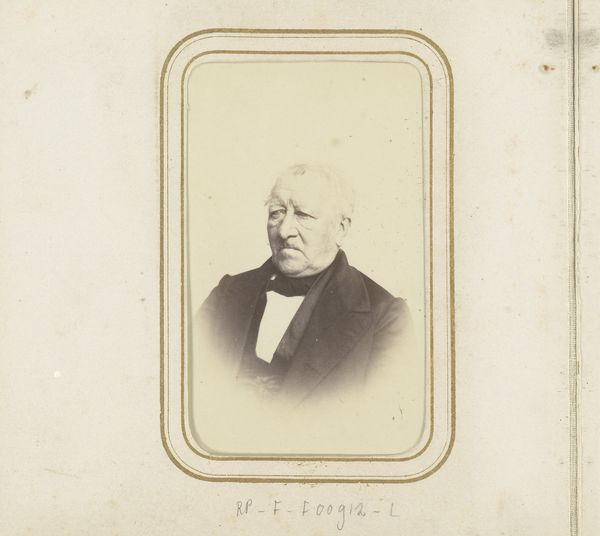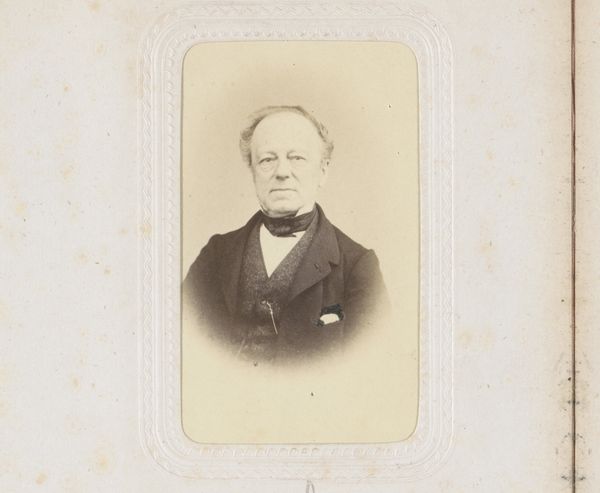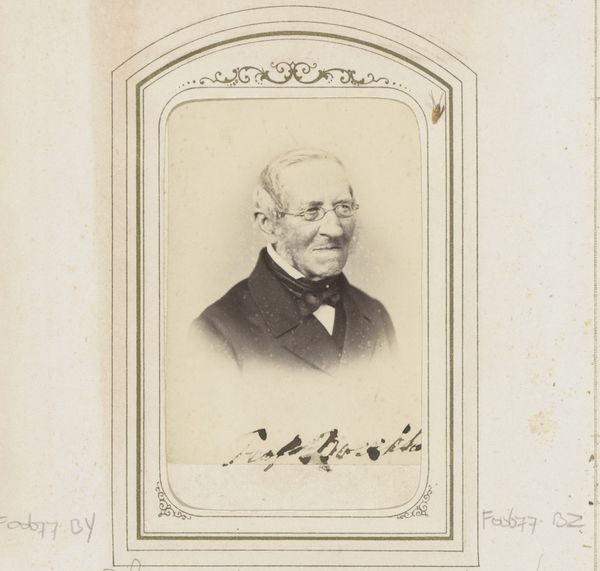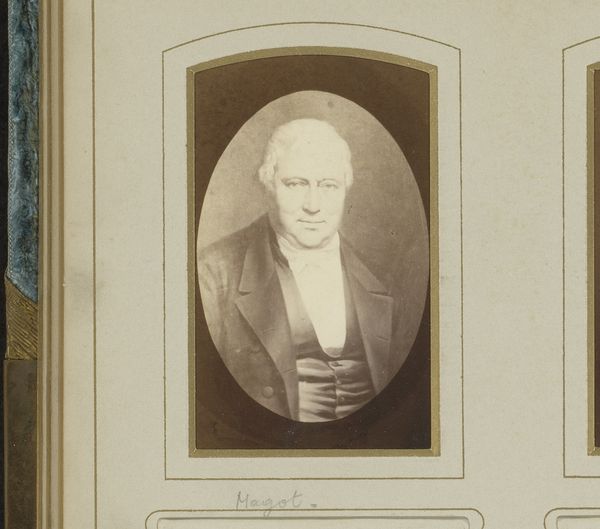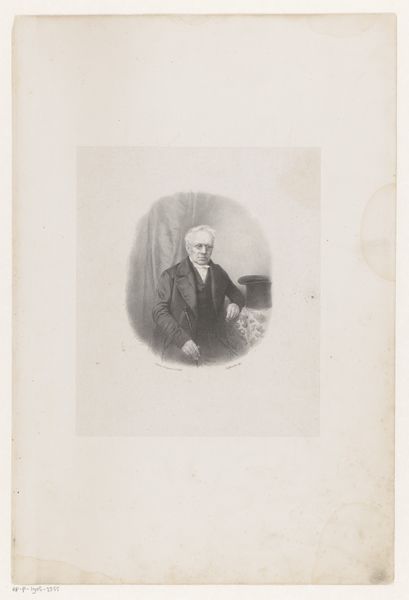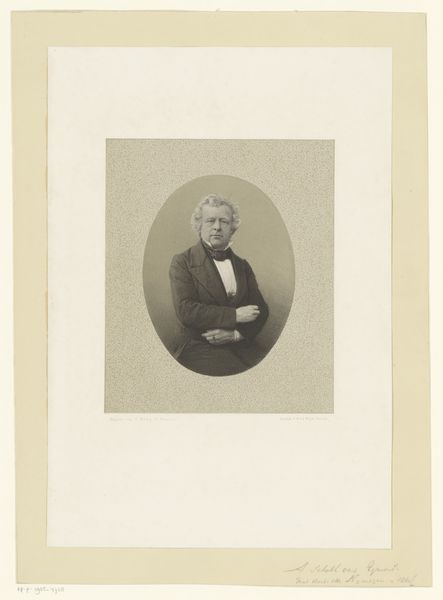
photography, gelatin-silver-print
#
portrait
#
16_19th-century
#
photography
#
historical photography
#
gelatin-silver-print
#
19th century
Dimensions: height 85 mm, width 53 mm
Copyright: Rijks Museum: Open Domain
Editor: This gelatin silver print, "Portret van Alexander von Humboldt" by E. Linde, made sometime between 1855 and 1859, has a really interesting, almost dreamlike quality to it, doesn't it? What visual symbols stand out to you? Curator: Well, the portrait itself presents Humboldt, a titan of science, encased within a very ornamental border. It's fascinating how the soft focus and delicate tonality of the early photographic process work with the symbolic weight he carried. He becomes almost an icon. Editor: An icon? In what way? Curator: Think of icons through history—often framed, revered. This photographic treatment almost elevates him beyond a simple representation of a person. He represents Enlightenment ideals, exploration, the scientific spirit itself. Look at how his steady gaze meets ours; does it convey confidence, wisdom, or something else entirely? Editor: It's a knowing look, for sure. Almost like he’s challenging you. The framing suddenly feels significant. It’s not just decoration, but part of the meaning. Curator: Exactly. It reflects how the Victorians framed their heroes – both literally and figuratively. This portrait participates in that cultural act of memorializing and solidifying legacy through very deliberate imagery. So, how does considering him as a visual icon change how you read the portrait? Editor: I see it now, the deliberate act of shaping Humboldt’s image as something enduring, something…mythic. Thanks, I would have missed that. Curator: It’s in these layered readings, that the image's real power resides.
Comments
No comments
Be the first to comment and join the conversation on the ultimate creative platform.
